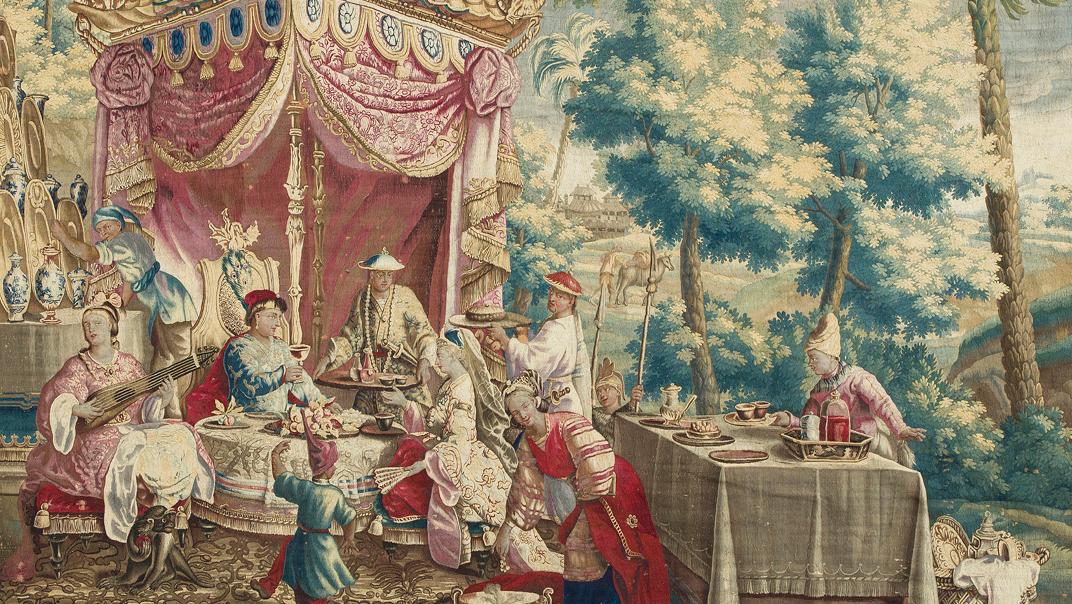The creation of the royal tapestry workshops under Louis XIV broke with the mural approach specific to medieval and Renaissance tapestries. In these spaces dedicated to the service of power, the loom established roots as an art of the multiple, which was also dependent on painting.
Royal Factory of Beauvais, after Guy Louis Vernansal, Jean-Baptiste Monnoyer and Jean-Baptiste Belin de Fontenay, first third of the 18th century, tapestry from the "History of the Emperor of China" showing "La Collation" ("The Light Meal"), by Guy Louis Vernansal, 333 x 394 cm/131 x 155 in.
Paris, Hôtel Drouot, December 2, 2019. Ader auction house. Mr. Dayot.
Sold for €147,200
Long before Louis XIV's minister, Jean-Baptiste Colbert, reunited Paris's scattered factories at Les Gobelins in 1662, Louis XIII had ordered the artist Simon Vouet , who was in Italy, to return in 1627. The idea was for the painter to collaborate with Maurice Dubout, the king's tapestry-maker, in the Louvre workshops. While paintings consolidated royal power, tapestries were a universal presence. This was also in Colbert's mind when he appointed Charles Le Brun (1619-1690) as head of Les Gobelins. The Mannerism and poetic lyricism of the Renaissance Vouet drew from the fashionable novels, poems and epics of the time were succeeded by a classicism that glorified the young Louis XIV . The hangings based on paintings were certainly not original, but they were intended to disseminate models, and become the norm. Those featuring the "History of Alexander", the "Muses" and the "Seasons" were…
com.dsi.gazette.Article : 32354
This article is for subscribers only
You still have 85% left to read.
